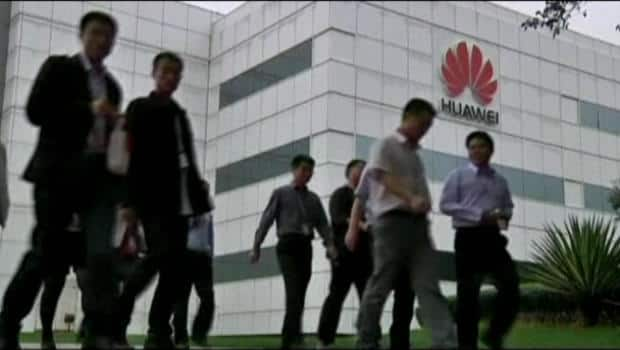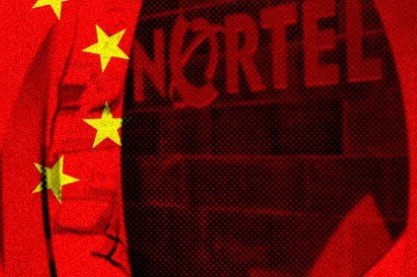Nortel-Huawei Deal Marks a New Model of Canada-China Business Relations




The Chinese Lunar New Year saw two important developments in Canada-China business relations. On the third-day of the Year of Dog, Saskatoon-based Potash Corporation of Saskatchewan Inc. (PotashCorp) announced its intention to invest around US$125 million in Sinochem Hong Kong Holdings Limited (Sinofert) to raise its ownership interest in the company to 20% from the previous 9.99%. The following day, Toronto-based Nortel Networks and Shenzhen-based Huawei Technologies Co., Ltd, entered into an MoU covering establishment of a joint venture to develop ultra broadband access solutions for markets around the world. In this ground-breaking deal, Nortel will be the majority shareholder and the company will be headquartered in Ottawa. The two partners have also entered into a supply agreement that allows Nortel immediately to begin engaging customers with Huawei’s current industry-leading broadband access portfolio. These deals by industry majors overcome one of the obstacles to greater cooperation between Chinese and Canadian companies -- the size mismatch that hampers Canada’s heavily SME-based industries.
Although Canada-China bilateral investments and joint ventures are nothing new, having industry giants from each country team up is a relatively new. The only similar example is the joint venture between Bombardier Transportation, Power Corporation of Canada and Sifang Locomotive and Rolling Stock Works, which is owned by the Chinese Ministry of Railways. In the first of the two latest cases, PotashCorp is the world’s largest fertilizer enterprise, the largest global producer of industrial nitrogen products and one of only three North American suppliers of industrial phosphates. Its Chinese partner, Sinofert, is a leading fertilizer enterprise in China, with earnings of US$76 million in the first nine-month of last year. It is also one of the largest importers of fertilizer products in China, the largest distributor of these products and also a major producer of phosphate-based fertilizer. At the end of November 2005, it had 14 branch offices and 1,036 sales centres as part of an extensive distribution network that provided products to 76% of the total sown land in China.
Nortel, recently most familiar to Canadians for its accounting problems, is still a recognized global leader in delivering communications capabilities, while China’s Huawei is a leader in providing next generation networks for telecommunications operators around the world. Huawei’s products and solutions are deployed in over 100 counties and serve 28 of the world’s top 50 companies, as well as more than one billion users worldwide.
The strategy of two industry majors teaming up turns a competitive relationship into a partnership that, potentially, will benefit both parties. For the PotashCorp-Sinofert deal, as PotashCorp’s President and CEO said, “This investment fits our long-term Potash First Strategy of extending our enterprise in areas with fast-growing demand for our products. . . This gives us a significant voice in a company that provides us much greater access to one of the world’s agricultural economies.”
The Nortel-Huawai joint venture will combine Huawei’s market-leading broadband access solutions with Nortel’s voice and broadband networking technologies to create a new product portfolio designed to be a leader in the estimated US$9 billion-a-year industry. Nortel gains an immediate range of broadband access equipment, a market segment it abandoned in 2001, without having to invest millions in development costs. Huawei, in return, gets better access to the North American market through Nortel’s business network.
While the PotashCorp-Sinofert partnership follows the traditional supplier-customer model, targeting the largest emerging market in the world, the Nortel-Huawai joint venture looks well beyond Chinese domestic business. The new company will aim at the global market, which is crucial for both economies. Seeing Chinese companies’ emerge as global players is no longer a novelty. One question is whether more Canadian firms, given their generally small size, can partner strategically with their appropriate Chinese counterparts, tackling the global market together.
Promoting bilateral investments is the key to strengthening Canada-China strategic partnerships. Naturally, more Canadian investment in China will raise the level of Canadian business awareness of Chinese firms. Canadians will also become more aware of the range of China’s outward investment, a development that is relatively unrecognized in this country. Much of the attention in this area has been focused on China’s state-owned enterprises (SOEs) and their relatively recent global hunt for energy supplies. However, Huawai, a private telecoms company, has spent over 10 years quietly setting up its global distribution network in over 100 countries. It has established successful joint ventures with several Western equipment companies, including 3Com Corp., with recently reported quarterly sales of US$111 million from this venture. A recent APF Canada report on Chinese companies’ outward investment intentions concludes that there are clear indications that non-SOEs, particularly private companies, are nurturing global ambitions and following the SOEs into world market, and in areas far beyond the energy sector. This suggests that there is a range of areas where Canadian and Chinese businesses can cooperate in the global market if they can find compatible partners. The PotashCorp-Sinofert and Nortel-Huawei partnerships are likely the models for these types of Canada-China business relations.
No comments:
Post a Comment
Comments always welcome!